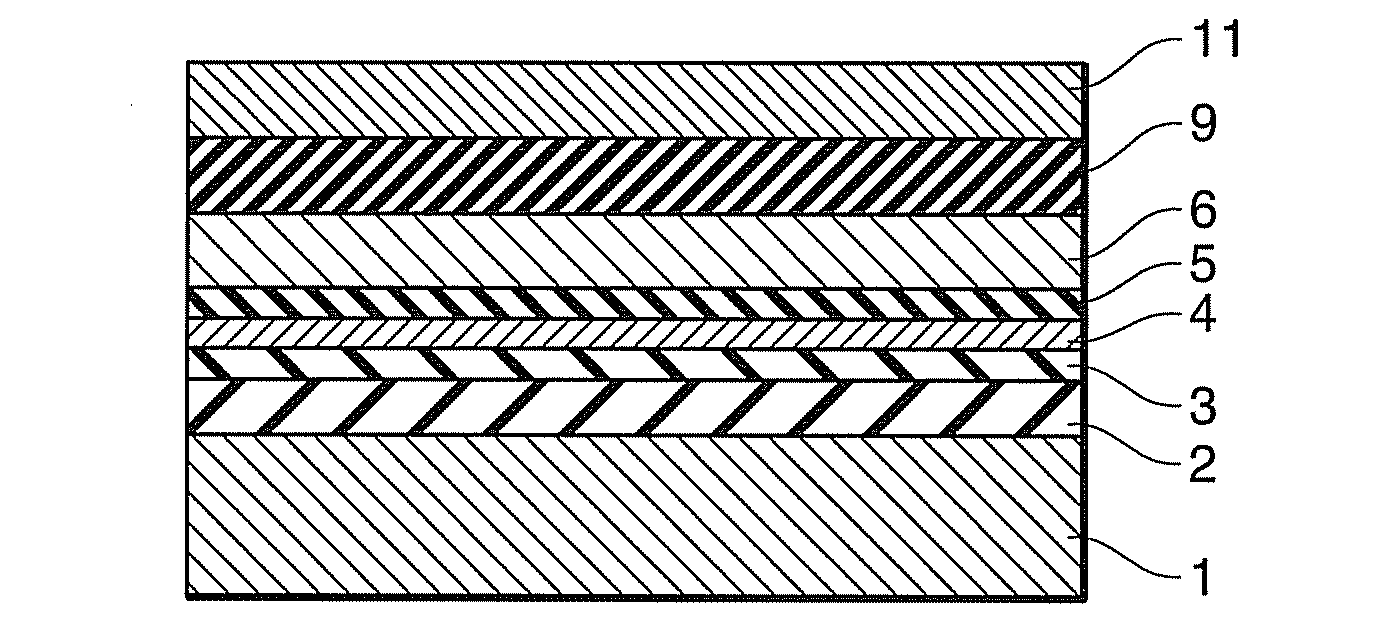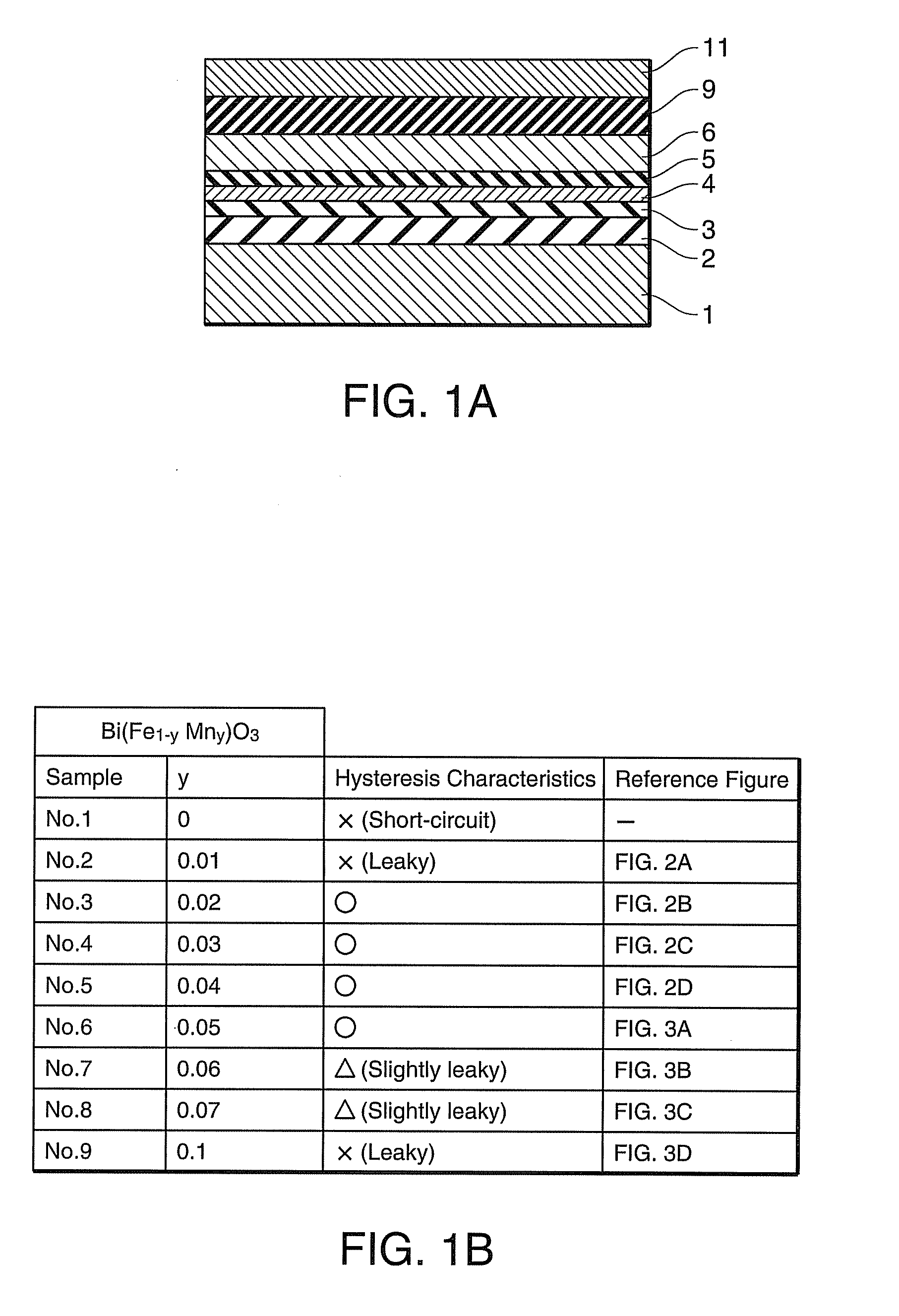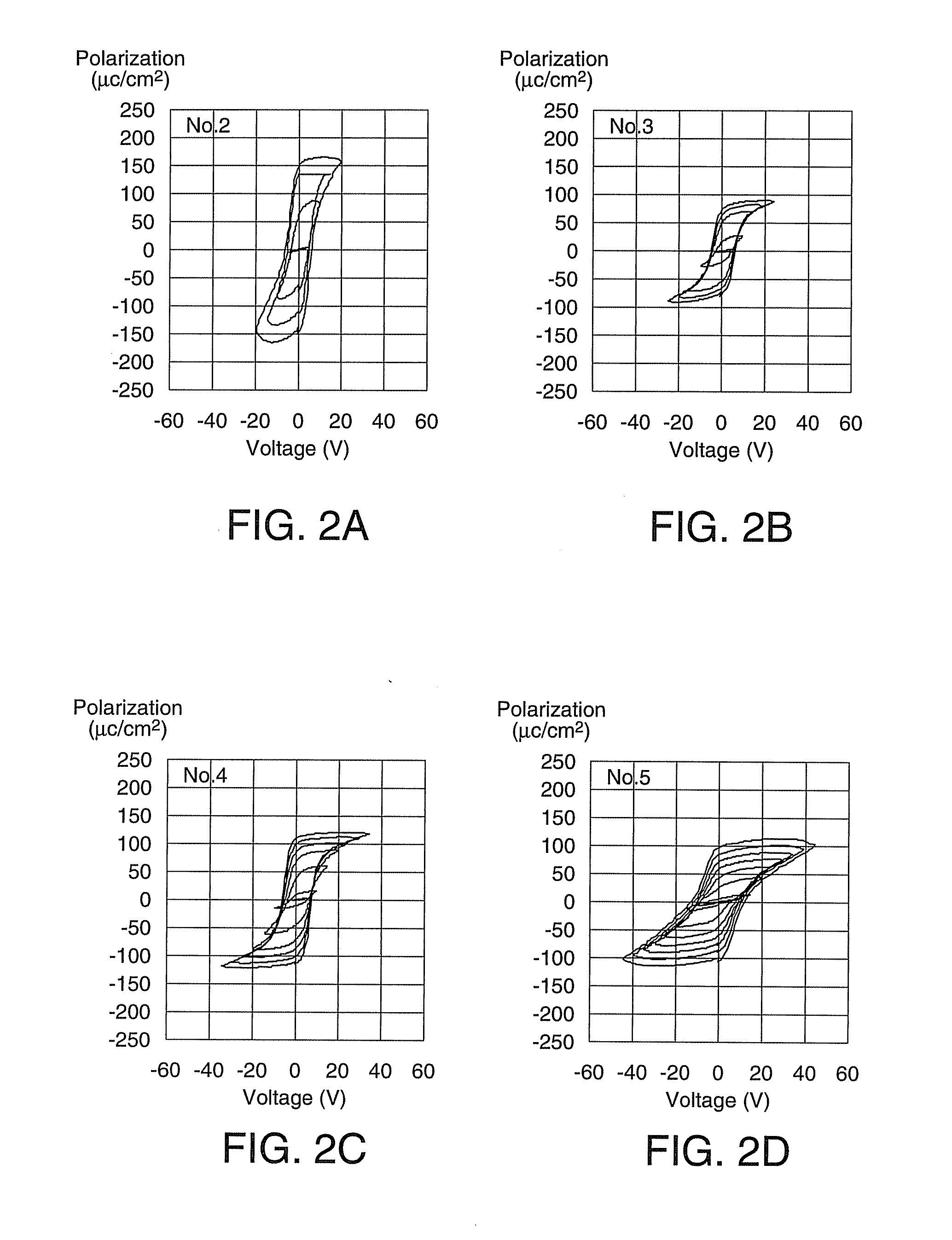Piezoelectric material and piezoelectric element
- Summary
- Abstract
- Description
- Claims
- Application Information
AI Technical Summary
Benefits of technology
Problems solved by technology
Method used
Image
Examples
embodiment 1
[0042]FIG. 1A is a cross-sectional view showing a step of a method for forming piezoelectric material in accordance with an embodiment of the invention. First, as shown in FIG. 1A, a substrate 1, such as, for example, a silicon (Si) substrate is prepared, and an elastic film (vibration plate) 2, such as, a silicon oxide film is formed on the surface of the substrate 1. The silicon oxide film may be formed by, for example, thermal oxidation to a film thickness of about 400 nm.
[0043]Then, on the elastic film 2, a TiAlN (titanium aluminum nitride) film 3 is formed by, for example, a RF sputter method to a film thickness of about 100 nm. Next, an Ir (iridium) film 4 is formed by a DC sputter method on the TiAlN film 3 to a film thickness of about 100 nm, and then an iridium oxide (IrO) film 5 is further formed thereon by a DC sputter method. The laminated films function as an adhesion layer between the silicon oxide film and the lower electrode, or function as a diffusion prevention lay...
embodiment example 1
[0046]For example, a source material solution of Bi(Fe1−yMny)O3 adjusted to have an oxide concentration of 0.165 mol / kg is coated on a Pt film 6 by a spin coat method at 1500 rpm, thereby forming a precursor film. Then, the film is heat treated at 350° C. for three minutes, thereby drying and cleaning the film. The cleaning is conducted to thermally decompose organic compositions remaining in the precursor film into NO2, CO2, H2O and the like, and to remove them. The coating, drying and cleaning steps are repeated ten times, and then sintering (heat treatment) is conducted at 650° C. for ten minutes by using a lamp anneal furnace, thereby forming a Bi(Fe1−yMny)O3 film (the film 9) having a film thickness of about 400 nm. It is noted that the oxide concentration means a concentration of Bi(Fe1−yMny)O3 that is an oxide in this case.
[0047]Then, on the Bi(Fe1−yMny)O3 film (9), a conductive film, such as, for example, a Pt film is deposited by a DC sputter method to a thickness of about ...
embodiment example 2
[0052]In this embodiment example, structures (see FIG. 1A) described above were formed by a process similar to that of Embodiment Example 1, using a source material solution in which the value x in films of (1−x)Bi(Fe1−yMny)O3−xBa(ZruTi1−u)O3 was adjusted in the range between 0 and 0.5, and the dielectric characteristics of the structures were examined. It is noted that the value y and the value u were fixed at y=0.05 and u=0. In other words, mixed crystals of Bi(Fe, Mn)O3 and Ba(Ti)O3 were formed using a source material solution of (1−x)Bi(Fe0.95Mn0.05)O3−xBaTiO3.
[0053]FIG. 4 is a table showing the pass and fail results of the hysteresis characteristics of samples No. 10-No. 15 whose composition ratios x were adjusted, respectively. FIGS. 6A-5D and FIGS. 6A-6B are graphs showing the hysteresis characteristics of the samples, respectively. It is noted that sample No. 10 is the same as sample No. 6.
[0054]As shown in FIG. 4 through FIG. 6B, it is clear that samples No. 14 and No. 15 w...
PUM
 Login to View More
Login to View More Abstract
Description
Claims
Application Information
 Login to View More
Login to View More - R&D
- Intellectual Property
- Life Sciences
- Materials
- Tech Scout
- Unparalleled Data Quality
- Higher Quality Content
- 60% Fewer Hallucinations
Browse by: Latest US Patents, China's latest patents, Technical Efficacy Thesaurus, Application Domain, Technology Topic, Popular Technical Reports.
© 2025 PatSnap. All rights reserved.Legal|Privacy policy|Modern Slavery Act Transparency Statement|Sitemap|About US| Contact US: help@patsnap.com



